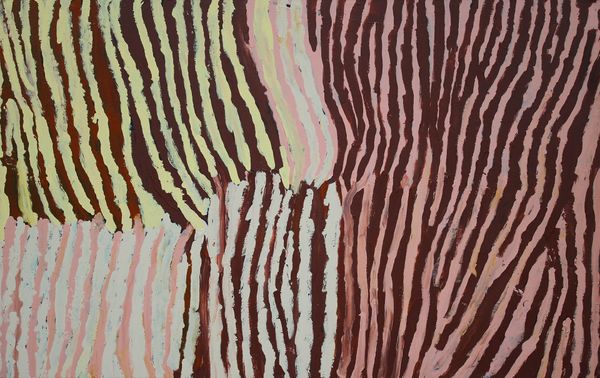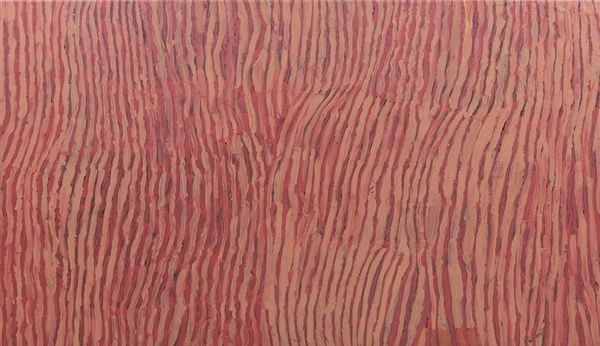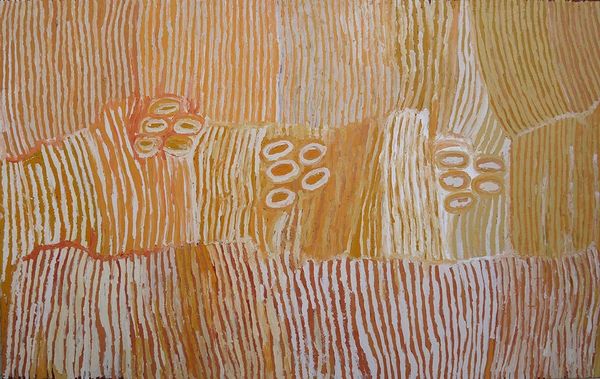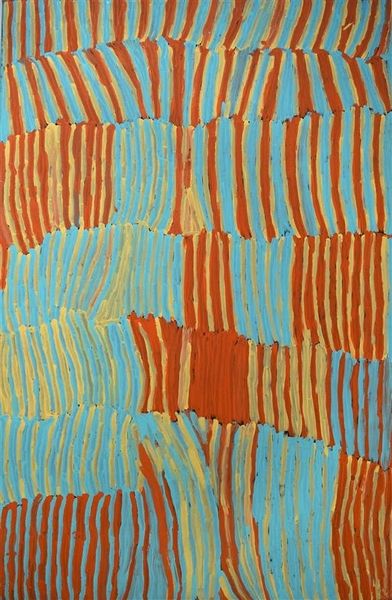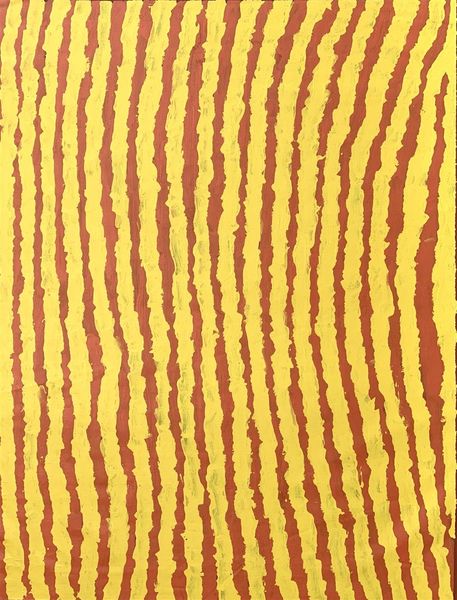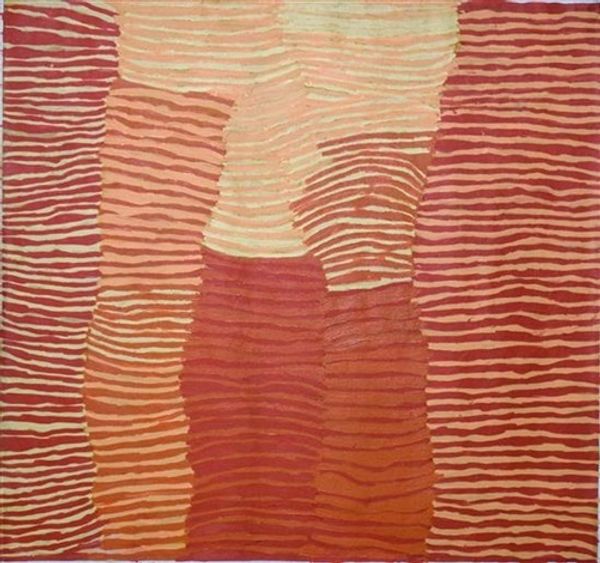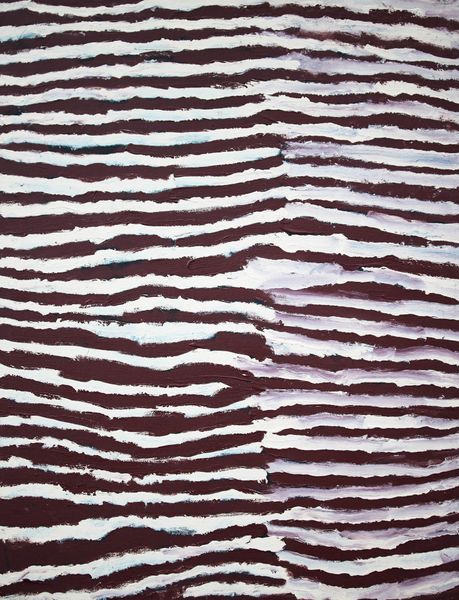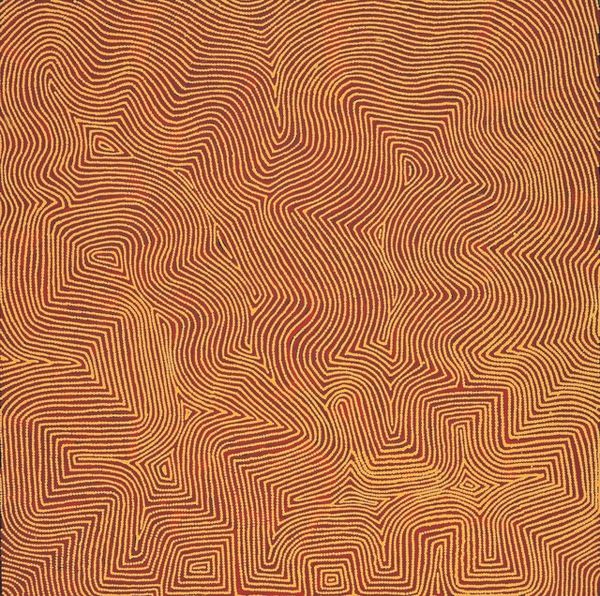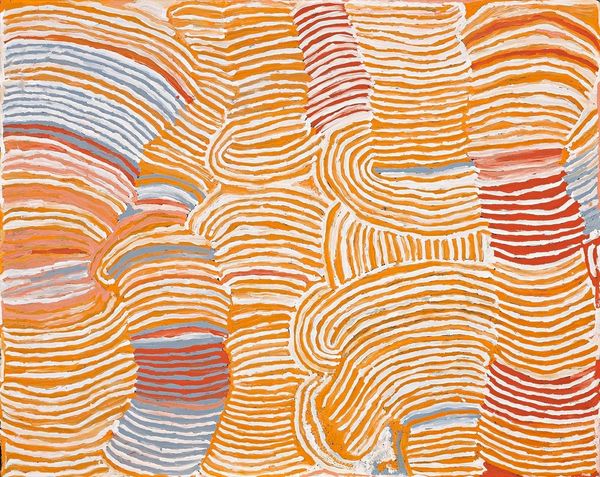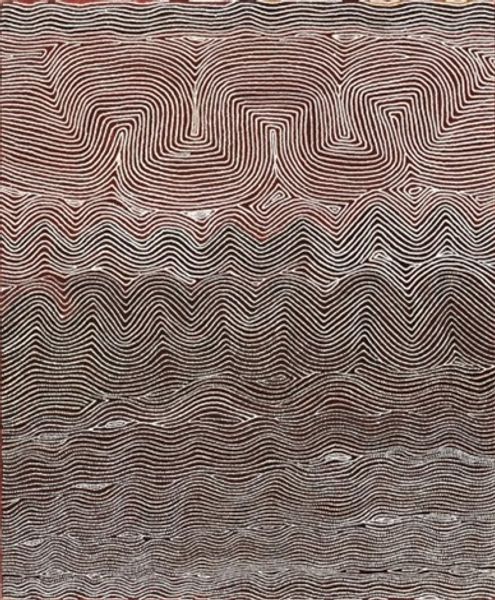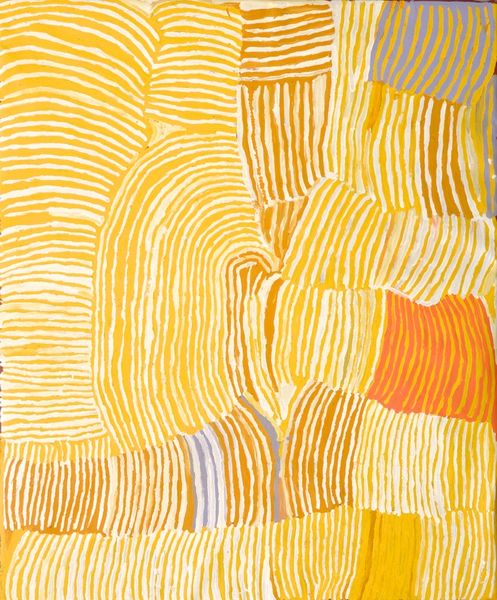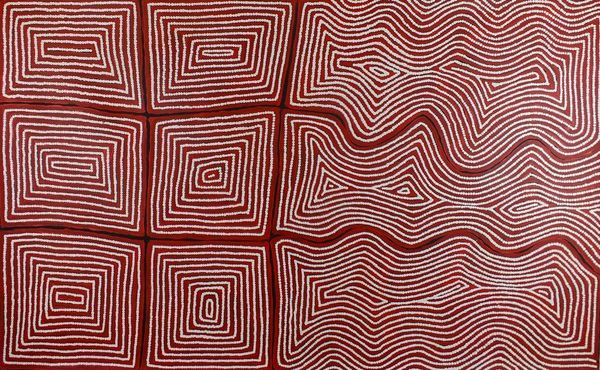
painting
#
organic
#
painting
#
geometric pattern
#
abstract pattern
#
organic pattern
#
abstraction
#
line
#
organic texture
Copyright: Makinti Napanangka,Fair Use
Curator: Before us is Makinti Napanangka’s "Kungka Kutjarra (Two Women/Hair String Ceremony)," created in 2008. Editor: It has such a mesmerizing, almost hypnotic quality. The repetition of lines creates a visual rhythm, but there’s a real warmth too, from those earthy tones. It reminds me of raw textile production. Curator: In terms of material concerns, the use of acrylic paint on canvas, particularly with such an emphasis on linear patterns, positions the work within both indigenous art traditions and contemporary art practices. The painting demonstrates a tangible connection between process and meaning. We must examine how the use of simple materials elevates the status of traditional Warlpiri ceremonies. Editor: And it speaks so powerfully about Warlpiri women's traditions. This painting, in its depiction of the hair string ceremony, creates visibility around deeply rooted cultural practices. I immediately think of the role of women in maintaining kinship ties through ritual practice. It is crucial to consider how art might challenge colonial narratives by reclaiming visibility and agency. Curator: Precisely. Look at the careful consideration given to each stroke. This rhythmic, repetitive mark-making acts as a testament to the labor-intensive aspect of creating ceremonial objects. I believe examining these repetitive gestures and understanding the relationship between effort and form is essential in contextualizing this artwork. The act of painting then mirrors the laborious, collective making of the hair string itself, reflecting shared labor. Editor: Thinking more broadly, what I appreciate is the work's inherent resistance to the commodification of indigenous culture. While using commercial materials like acrylic, the painting firmly roots itself in specific cultural and historical practices. To understand this piece more profoundly, you must confront questions about representation, cultural appropriation, and the politics of display. Curator: Yes, understanding these indigenous painting methods requires engaging with issues surrounding the market and the complex exchange between materials and ideas. But considering this object primarily as a material outcome helps us deconstruct power dynamics between makers, markets, and viewers. Editor: I appreciate how engaging with this painting necessitates a multifaceted understanding of tradition, identity, and resistance. Curator: And how this simple yet captivating painting reflects complex intersections between labor, meaning, and materiality.
Comments
No comments
Be the first to comment and join the conversation on the ultimate creative platform.
